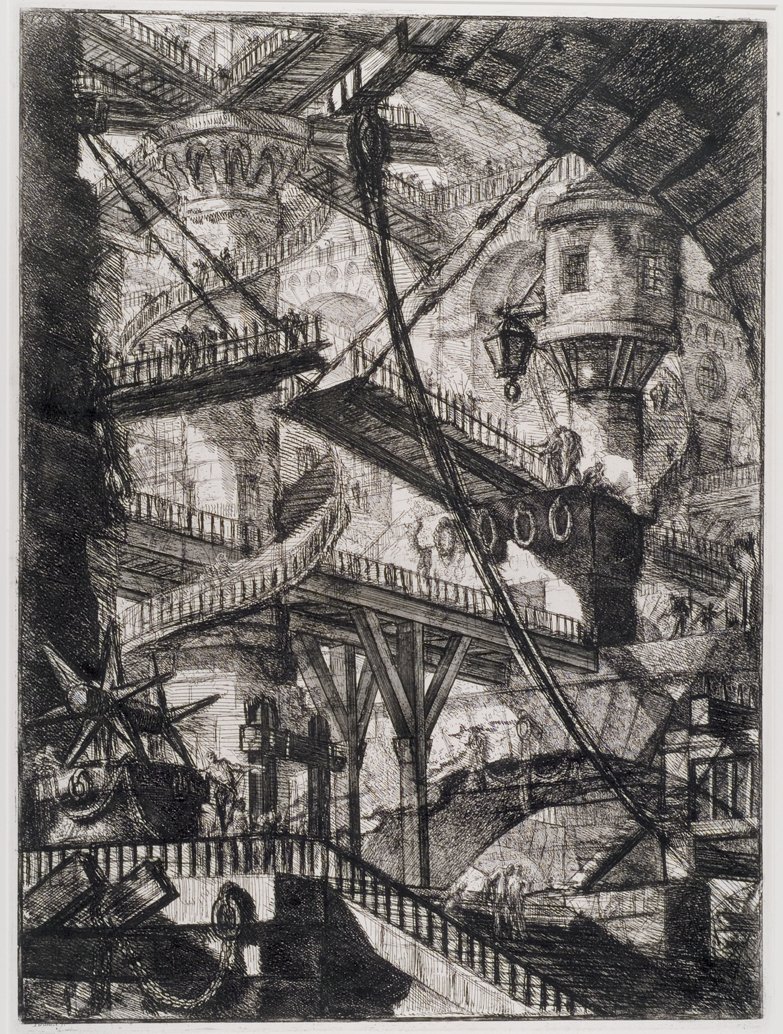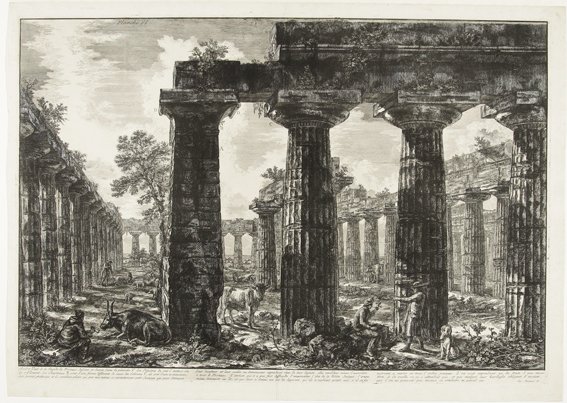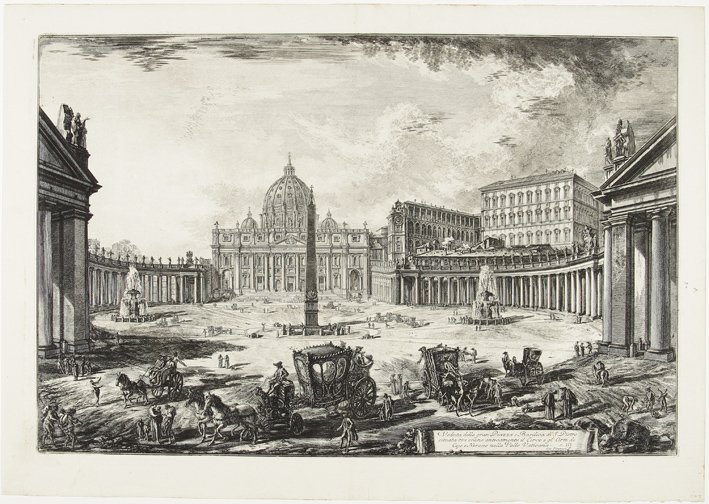City Views of Rome
From the moment he moved to Rome, in 1740, Piranesi started focusing on imaginative representations of reality. He would become known for his drawings of monuments in Rome and amazing ruins. His ‘liberal’ approach provided a fertile imagination for some extraordinary pre-Romantic fantasy ruins. He couldn’t care less about the rules and experimented with different styles from the past in order to come up with new designs. Above all he enjoyed altering the architectural and design styles of his own day and age. In his architectural drawings and designs for furniture and vases, he combined Venetian rococo flamboyance, Egyptian statues, Etruscan symbols and Roman grandeur. Piranesi was also interested in archaeology and his drawings of antiquities as well as his city views were extremely popular with tourists who were making a cultural ‘Grand Tour’ through Europe to conclude their education. His work has always appealed to a wide audience and has to a large extend determined the image foreigners have of the city of Rome.
Imaginary prisons
Piranesi’s world-famous series Carceri d’Invenzione (Imaginary Prisons, 1749-1750) shows shadow worlds that seem to go on endlessly beyond the edges of the paper, and in which the eye is free to roam along stairs, bridges, galleries and gangways. Here he has created an underworld of ominous caverns, and the tiny figures he has added to these spaces – sometimes calmly walking, sometimes gesticulating fiercely – reveal the insignificance of man. The prints are realistic to a certain extent, but have become grand and impressive as a result of the exaggerated perspective, dramatic lighting and staircases leading up to incredible heights. Piranesi was an extremely skilled engraver and constantly continued to improve his work by scratching new lines into the etching plates. In the exhibition, around twenty prints from both the first and second ‘Carceri’-series are shown. During his lifetime, Piranesi continued to work on the plates, reworking the prints from the second edition (1761), for instance, with more black lines, more detail, making them even more menacing.
His work is an inexhaustible source of inspiration for painters, writers and architects. His influence can be found in the work of architects such as Constant, Aldo Rossi and Daniel Libeskind, writers such as Aldous Huxley and more recently in film adaptations of the Harry Potter books and The Discovery of Heaven.
About Giovanni Battista Piranesi
Born in the region around Venice, the seeds of Piranesi’s creativity and versatility were already sown at a young age. His father was a stonemason, his uncle introduced him to architecture and his brother taught him more about classical history. Very much attracted to the cradle of Roman culture and its evocative remains, he left for Rome. The theatrical aspects of Venice would, however, always remain an important source of inspiration in his work. Trained as an architect, but with only one realised building to his name, Piranesi was only an architect ‘on paper’ and therefore able to let his imagination, freedom of expression and personal opinion speak.
Kunsthal during Boijmans Next Door
The Kunsthal helps in keeping the collection of Museum Boijmans Van Beuningen visible as part of the city-wide project ‘Boijmans Next Door’, in which eight locations are participating. Between January 2019 and January 2020, the Kunsthal will collaborate with Museum Boijmans on realising three exhibitions. After ‘Picasso on Paper’, an exhibition of prints by Giovanni Battista Piranesi will be shown from 25 May. And an exhibition on the subject of landscapes will follow in the autumn.
Press






